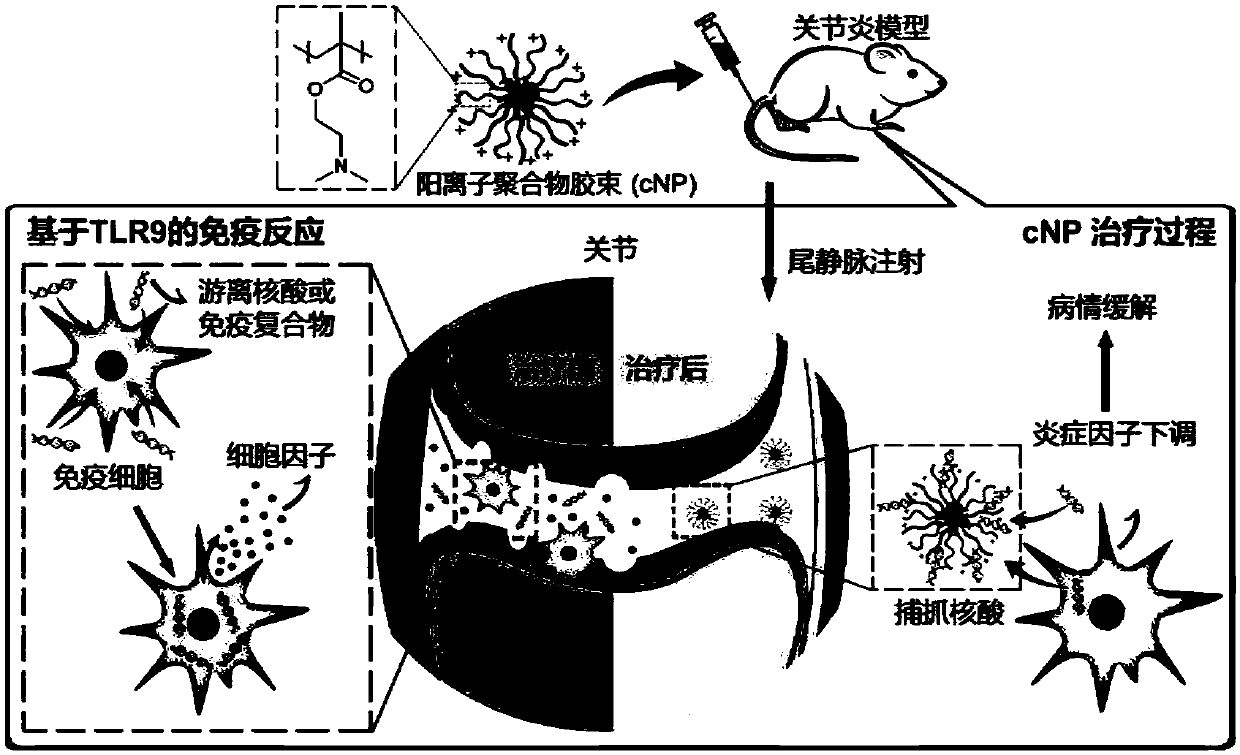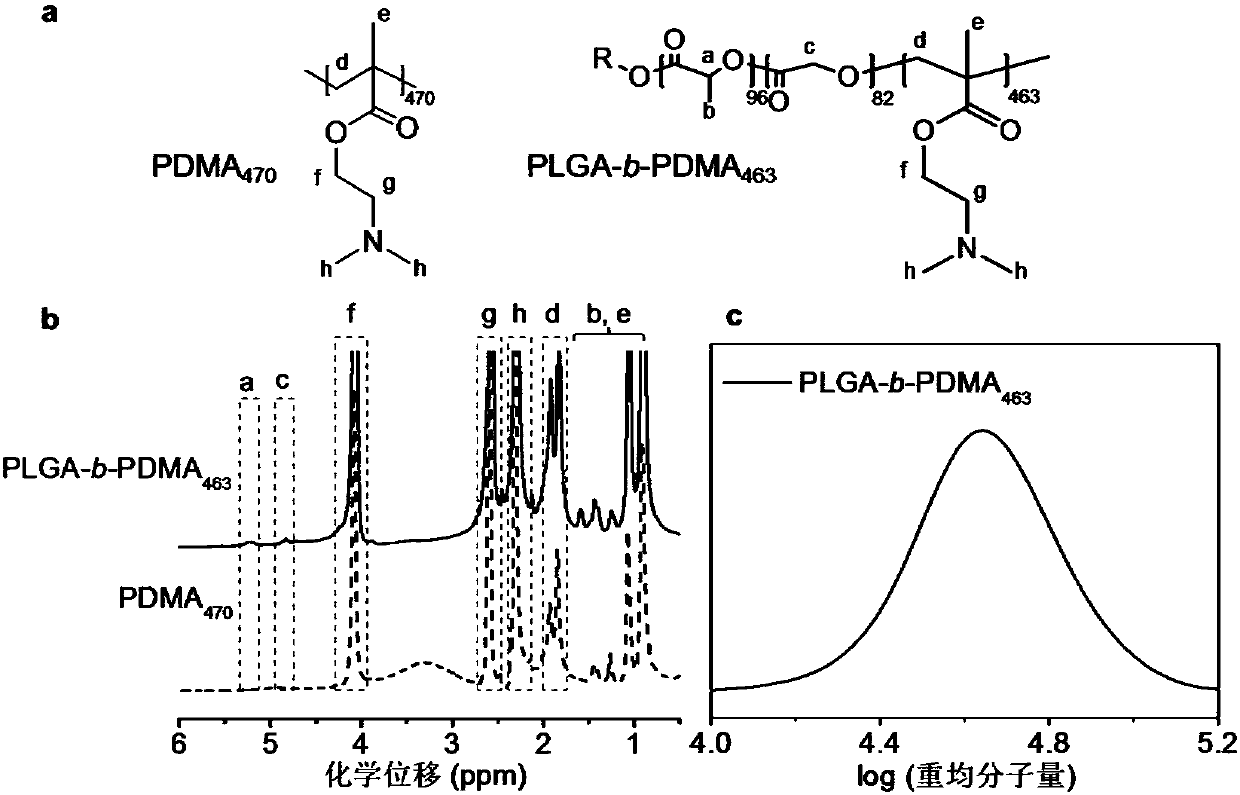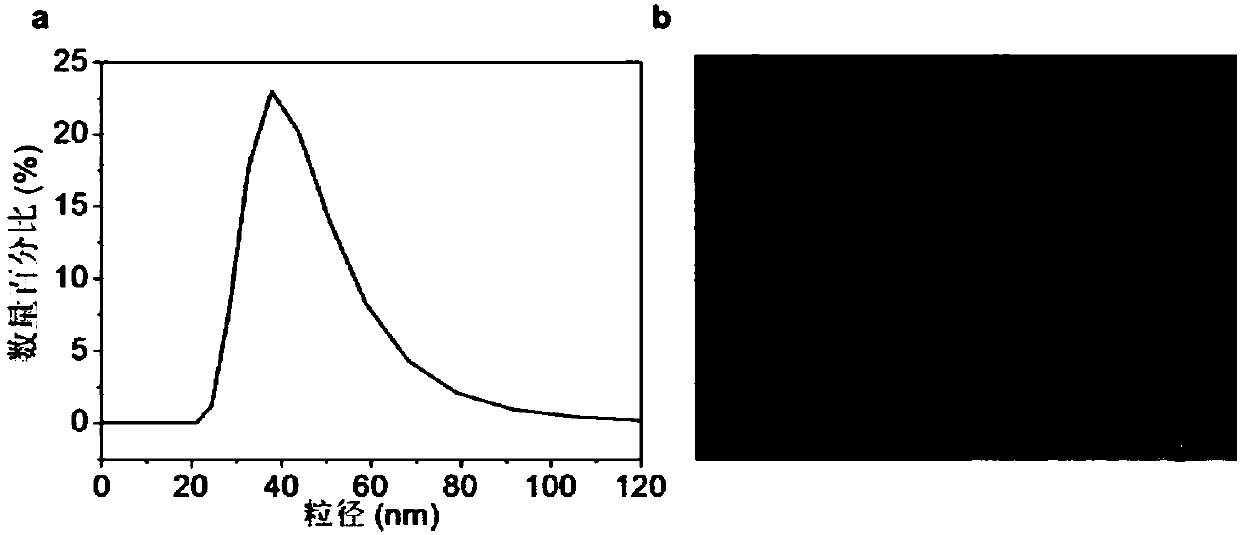Polymer nanoparticles capable of treating rheumatoid arthritis
A technology of polymer and polymer glue, applied in the field of polymer and biomedical materials
- Summary
- Abstract
- Description
- Claims
- Application Information
AI Technical Summary
Problems solved by technology
Method used
Image
Examples
Embodiment 1
[0107] Embodiment 1 prepares amphiphilic block copolymer PLGA-b-PDMA 463 and cationic polymer micelles containing it
[0108] The cationic amphiphilic block copolymer used to prepare micelles in this example is PLGA-b-PDMA 463 , whose structure is as follows:
[0109]
[0110] 1. PLGA-b-PDMA 463 The preparation process is as follows:
[0111] S1. To 9 g ester-terminated PLGA (commercially available; M η =8000; with 1 M calculated by HNMR n =12000, the molar weight is 0.75mmol), add 90mL toluene, azeotropic water removal;
[0112] S2. Cool the ester-terminated PLGA after removing water to room temperature, add 50mL CH 2 Cl 2 , 0.08mL triethylamine (1.28mmol); Take 0.06mL 2-bromoisobutyryl bromide (1.28mmol) and wash with 2.5mL CH 2 Cl 2 Dilute and add dropwise to the flask filled with PLGA and triethylamine under ice-water bath cooling, remove the ice bath 4 hours after the drop, and react for 48 hours;
[0113] S3. The product obtained in S2 is extracted once wit...
Embodiment 2
[0126] With reference to the method of Example 1, prepare amphiphilic block copolymer PLGA-b-PDMA 347 , whose structure is as follows:
[0127]
[0128] With reference to the method of embodiment 1, based on PLGA-b-PDMA 347 Preparation of cationic polymer micelles cNP 347 , with an average particle size of 66nm and a Zeta potential of +14mV.
Embodiment 3
[0130]With reference to the method of Example 1, prepare amphiphilic block copolymer PLGA-b-PDMA 202 , whose structure is as follows:
[0131]
[0132] With reference to the method of embodiment 1, based on PLGA-b-PDMA 202 Preparation of cationic polymer micelles cNP 202 . Its average particle size is 97nm and its Zeta potential is +11mV.
PUM
| Property | Measurement | Unit |
|---|---|---|
| particle diameter | aaaaa | aaaaa |
| particle size | aaaaa | aaaaa |
| particle size | aaaaa | aaaaa |
Abstract
Description
Claims
Application Information
 Login to View More
Login to View More - R&D
- Intellectual Property
- Life Sciences
- Materials
- Tech Scout
- Unparalleled Data Quality
- Higher Quality Content
- 60% Fewer Hallucinations
Browse by: Latest US Patents, China's latest patents, Technical Efficacy Thesaurus, Application Domain, Technology Topic, Popular Technical Reports.
© 2025 PatSnap. All rights reserved.Legal|Privacy policy|Modern Slavery Act Transparency Statement|Sitemap|About US| Contact US: help@patsnap.com



